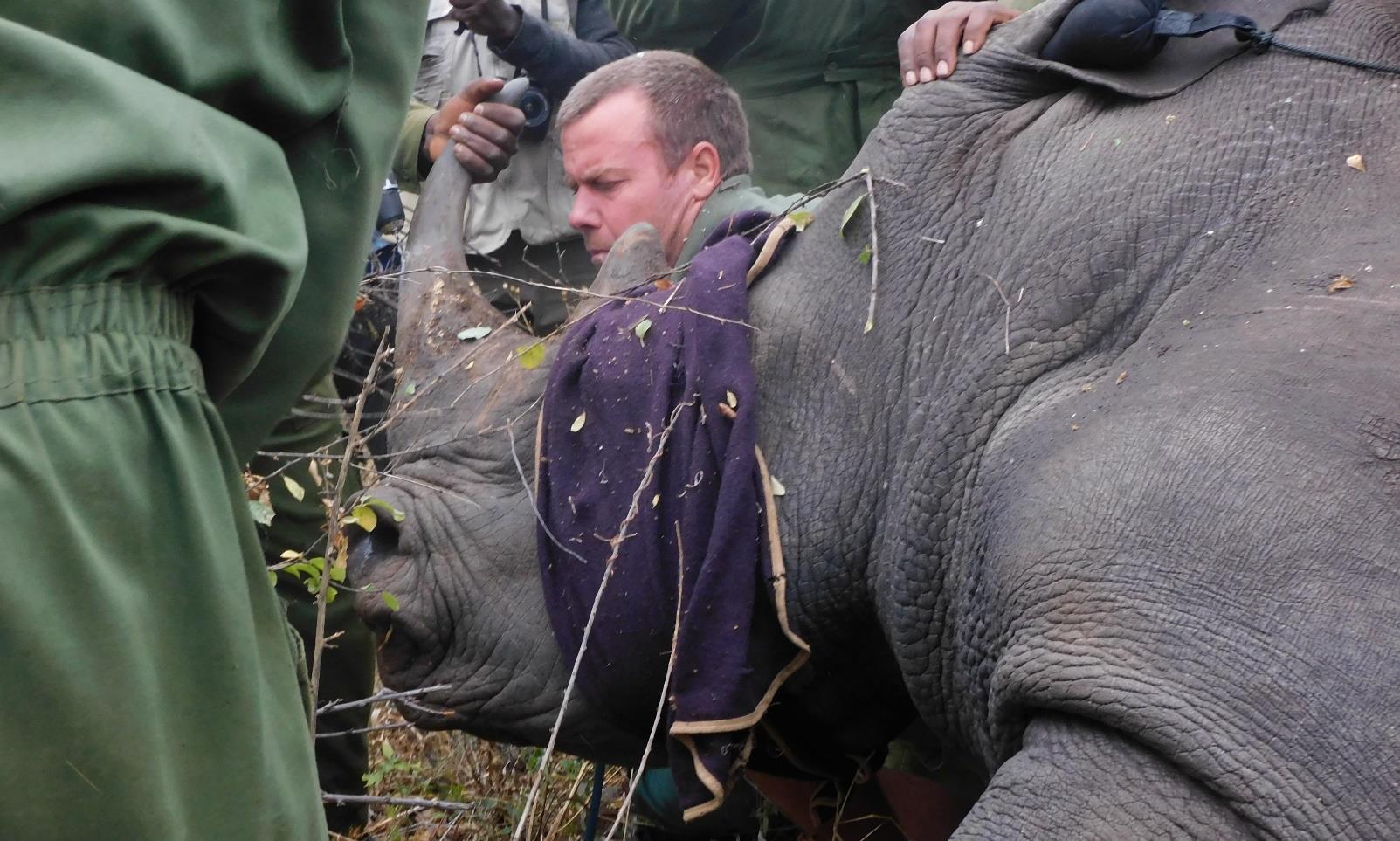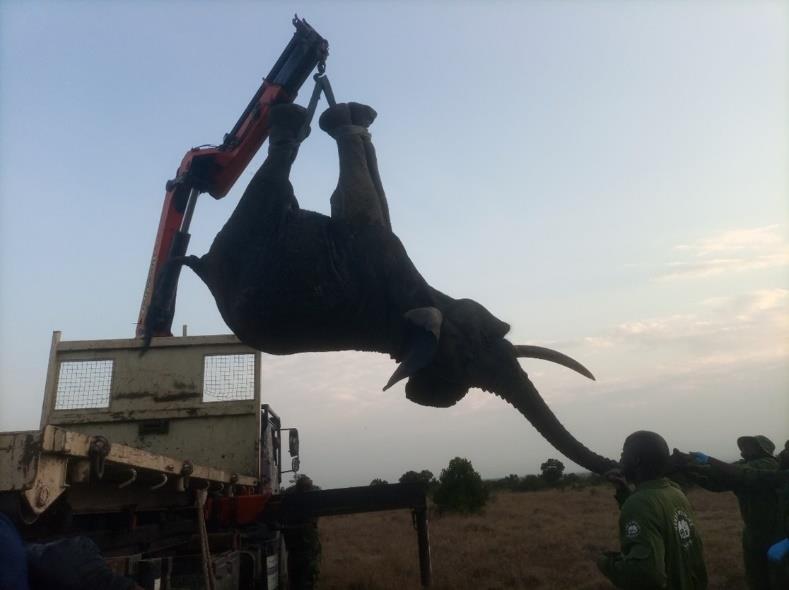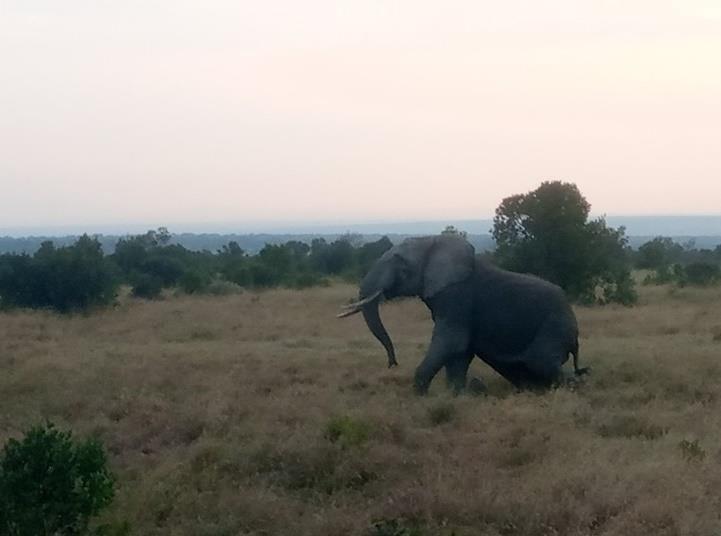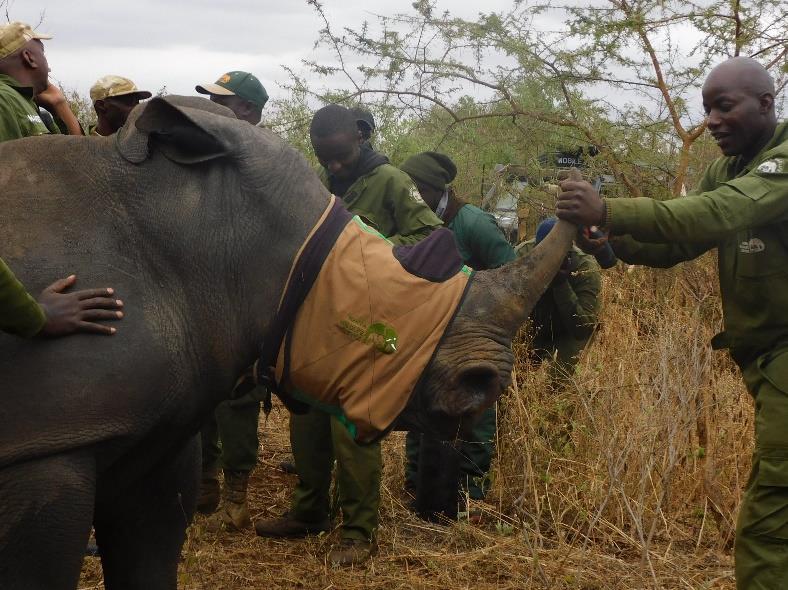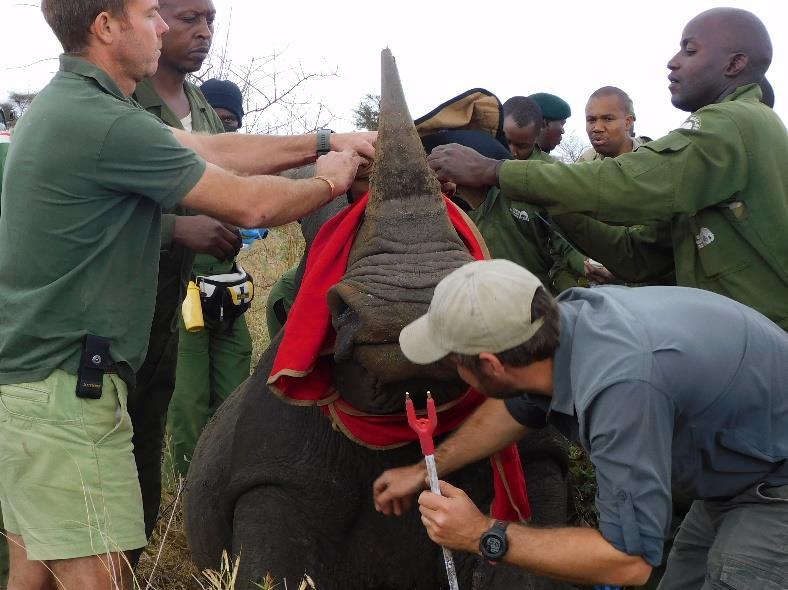SWT/KWS MT KENYA MOBILE VETERINARY UNIT
AUGUST 2025
4 Cases in August 2025
August Report by Dr. Poghorn
1 HWC Case
3 Rhino Cases
The Mt Kenya Veterinary Unit had a series of field work involvement for the month of August including the conclusion of the baboon collaring project at Mpala Research Centre, elephant translocation from Mount Kenya Wildlife Estate to Ol Pejeta Conservancy, Southern white rhino translocation from Meru National Park, Lewa and Borana Conservancies to Loisaba Conservancy, Black rhino treatment at Salient rhino sanctuary and Black rhino treatment at Solio Game Reserve.
Acknowledgement
The Mt. Kenya Mobile Wildlife Veterinary Unit thanks the Kenya Wildlife Service for providing leadership and technical expertise. The veterinary team also appreciates The Sheldrick Wildlife Trust (SWT) for providing the financial and logistical support that enables the Unit to fulfil its mandate.
Case Details
August 2025
Human-Wildlife Conflict
Mt Kenya Wildlife Estate
The Elephant was reported to have been sighted at the Mount Kenya Wildlife Estate (Mukwe) after it broke into the residential place, from Ol Pejeta Conservancy, posing a threat to human life.
Immobilisation and relocation
The elephant was captured by chemical immobilization and was darted from a helicopter, with a dan-inject dart gun. The elephant was immobilised with two darts containing 16mg Etorphine and 40mg Azaperone.
The elephant was captured and loaded into a translocation lorry using a crane, with the aid of lifting straps; where he was secured on the lorry and transported into the Ol Pejeta Conservancy for release.
Prognosis
The elephant was off-loaded from the lorry and reversed of anaesthesia. The capture and re-location operation were conducted to remove the possible threat by the elephant to humans at the Mount Kenya Wildlife Estate and move it back to his original habitat at Ol Pejeta Conservancy. The elephant was successfully moved and released well. .
Case 2 – 23rd August 2025
Black Rhino Natural Causes
Aberdares National Park
On the 6th of June the rhino was captured and re-located back into the Solio Game Reserve following a breakout. During the operation, the rhino was found with lesions including a laceration wound on the right thigh and filarial wounds on the flanks, which were treated. The lacerations were suspected to have been sustained from fights by other rhinos. The rhino was also notched during the re-location exercise. On the 17th June the rhino was translocated and introduced to Salient Rhino Sanctuary following a second breakout from the rhino sanctuary at Solio Game reserve. The male black rhino was reported to have lost body condition and was noted to have limited movements around the sanctuary, with general body weakness, Immobilisation, examination and treatment
The rhino was darted with 2mg Etorphine and 20mg Azaperone then stabilised with 8mg Butorphanol
The rhino had a poor body condition score, with a dull demeanour and was calm and standing in one location in the thickets before darting. General body weakness was noted of the rhino prior capture. Severe respiratory depression was noted of the animal after induction and stabilization, which necessitated quick reversal and release. A parenteral antibiotic, anti-inflammatory and metabolic stimulant treatment was indicated and administered to the animal for the idiopathic loss of body condition and health deterioration
Prognosis
The prognosis of the rhino, even with the intervention, is guarded-to- poor.
Case 3 – 20th August 2025
White Rhino Relocation
Loisaba Conservancy
An exercise to move 10 Southern White rhinos from Meru National Park and Lewa Conservancy to Loisaba Conservancy was conducted in the efforts of introducing the species to a new habitat at Loisaba. Although not indigenous to Kenya, Southern White rhinos are vital to species recovery, conservation and tourism. Their introduction reinforces the dedication to our heritage and biodiversity
Immobilisation and relocation
The candidates were selected based on optimal breeding potential and high competition pressure at the donor site, and the involvement in territorial fights. An Etorphine – Azaperone protocol was used for induction of the rhinos, and all were darted from a helicopter. they were partially reversed after immobilisation, allowing them to be walked into the crates. This approach allowed the vet team to continuously monitor their health, ensuring safe and low-stress journey.
The rhinos were transported by road and monitored at least every 2-3 hours while on transit to ensure they were calm and suffering no negative sedative effects. They were offloaded from the truck at the release site.
The full pure antidote, 100mg of naltrexone was administered intramuscularly, and the animals released into the wild. The rhinos were deployed with ear tags, transponders, and microchips on both horns, shoulders and rump, for the purpose of monitoring in the new habitat
Black Rhino Natural Causes
Solio Game Reserve
The rhino was described by the monitoring unit to be limping on her left forelimb with no noticeable external lesions on the affected limb. The rhino was reported to be nursing a 7-month-old calf.
Immobilisation, examination and treatment
The rhino was darted from a vehicle with 3.5mg Etorphine and 40mg Azaperone. A dose of 10mg of Butorphanol was administered intravenously to stabilize the animal by reversing the respiratory depression effects of etorphine. The rhino was positioned on sternal recumbency and supplemented with oxygen.
The general body condition score was poor; score 2 out of 5. The rhino had weight bearing lameness, favouring the left forelimb. The gait and movement of the rhino was affected and limited by the lameness, showing a significant degree of pain. Filarial worm wounds were found on the flanks, and under the neck. The rhino was notched for the purpose of identification A parenteral antibiotic, anti-inflammatory and metabolic stimulant treatment were administered to relief pain and cover against secondary infection, as follows: Amoxicillin, 15,000mg, Phenylbutazone, 6,000 mg, Butaphosphan 200g and Vitamin B12.
Prognosis
The poor body condition was attributed to the lameness and nutrients demand to nurse the young calf. The prognosis is guarded.







